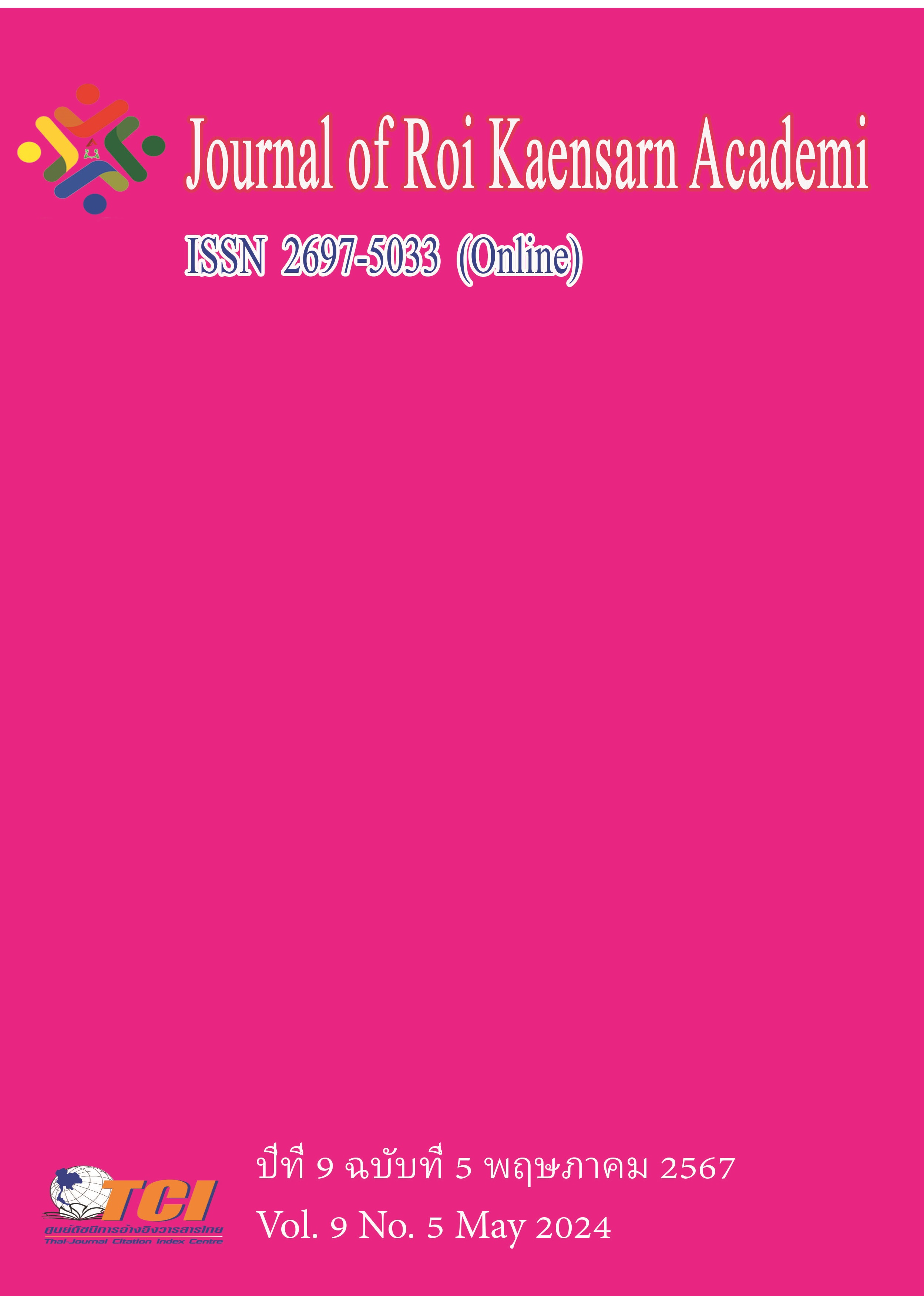The Use of Multiple Intelligence Enhanced Techniques and Role-Playing Activities Facilitates Rapid Success for Speaking and School Study
Main Article Content
บทคัดย่อ
The objectives of this research were 1) to develop a learning management plan by integrating the multiple intelligence theory with role-play activities for students in grades 12 at the Demonstration School of Suan Sunandha Rajabhat University, 2) to compare the achievement of School Study between the pre-test and the post-test before and after using a learning management plan and 3) to study the students’ satisfaction in studying by integrating the multiple intelligence theory with role-play activities in the classroom. The sample of this study was obtained from a stratified sampling, totaling 45 students in semester 2, the academic year 2023. The research instruments were the learning management plan, the School Study test of integrating the multiple intelligence theory with role-play activities, and the questionnaire on students' opinions on studying by using the Multiple Intelligence-enhancing techniques and Role-Playing activities to develop speaking skills and School Study. Data were analyzed with mean, standard deviation, and t-test dependent. The Results are Thai lesson plans of commendable content validity, as evidenced by the experts in education who assigned a high score, the independent samples t-test confirmed that post-test results surpassed pre-test scores, the attitudes of the students were positive, and they enjoyed studying.
Article Details
เอกสารอ้างอิง
Armstrong, T. (2009). Multiple intelligences in The Classroom. (3rd Ed.). Alexandria: Association of Supervision and Curriculum Development.
Albert, D. H., & Reed, J. (2008). What really matters: A conversation between David H. Albert and Joyce Reed. Life Learning Magazine, March/April, 8-32. Online. Retrieved June 19, 2009, from http://www.lifelearningmagazine.com/0804/MarApr08.pdf
Barrington, E. (2004). Teaching to student diversity in higher education: How multiple intelligence theory can help. Teaching in Higher Education. 9 (4), 421-434. https:// doi.org/10.1080/1356251042000252363
Bordei, S. (2018). How can one possibly determine the multiple intelligences? Journal Plus Education. 18 (2), 204-212. https://doi.org/10.24250/jpe/2/2017/SB
Calik, B & Birgili, B (2013).(. Multiple Intelligence Theory for Gifted Education: Criticism and Implications. Journal for the Education of the Young Scientist and Giftedness. 1 (2), 1-12. https://doi.org/10.17478/JEYSG.201329002
Chiung Chu Wong. (1963). “Role Plays in the English Classroom,” English Teaching Forum. 21 (1), 43.
Felder, R & ,'Brent, R .(2005).( .Understanding Student Differences. Journal of Engineering Education. 94 (1), 57-72. https://doi.org/10.1002/j.2168-9830.2005.tb00829.
Gardner, H. (1983). Frames of mind: The theory of multiple intelligences. U.S.A: Basic Books.
Gardner and Stenberg (1988). Frames of mind: The theory of multiple intelligences. U.S.A: Basic Books.
Green, A. L., Hill, A. Y., Friday, E., & Friday, S. S. (2005). The use of multiple intelligences
to enhance team productivity. Management Decision. 43 (3), 349-359. https://doi.org/ 10.1108/00251740510589742
Jena, R.K. (2018). Predicting students’ learning style using learning analytics: a case study of business management students from India. Behavior & Information Technology. 37 (10-11), 978-992. https://doi.org/10.1080/0144929X.2018.1482369
Ladousse, Gillian. (2019). Role Play. Oxford: Oxford University Press.
Moreno-Guerrero, A.J.; Romero-Rodríguez, J.M.; López-Belmonte, J.; Alonso-García, S. (2020). Flipped Learning Approach as Educational Innovation in Water Literacy. Water. 12, 1–13.
Moreno-Guerrero, A.J.; Rondón, M.; Martínez, N.; Rodríguez-García, A.M. (2020). Collaborative Learning Based on Harry Potter for Learning Geometric Figures in the Subject of Mathematics. Mathematics. 8, 1–17
Minnier, W., Leggett, M., Persaud, I., and Breda, K. (2019). Four smart steps : fall prevention
for community-dwelling older adults. Creat. Nurs. 25, 169–175. doi: 10.1891/1078-
25.2.169
Poole, G. T. (2000). Application of the theory of multiple intelligences to second language learners in classroom situations. Speech at the National Association of African American Studies & National Association of Hispanic and Latino Studies: 2000 Literature Monograph Series 21-26 February 2000, Houston.
Romero-Hall, E.; Adams, L.; Osgood, M. (2019). Examining the Effectiveness, Efficiency, and
Usability of a Web-Based Experiential Role-Playing Aging Simulation Using Formative
Assessment. J. Form. Des. Learn. 3, 123–132.
Sener, S & ,Cokcaliskan, A .)2018 (.An Investigation between Multiple Intelligences and Learning Styles. Journal of Education and Training Studies. 6 (2), 125-132. https://doi.org/10.11114/jets.v6i2.2643
Simoncini, K., Elliott, S., Carr, V., Manson, E., Simeon, L., and Sawi, J. (2018). Children’s
right to play in Papua New Guinea: insights from children in years 3–8. Int. J. Play 7,
–160. doi: 10.1080/21594937.2018.1495993
Storti D. Chaudia. “Teaching Grammar to Children Communication,” English Teaching Forum. 18 (1), 31-32 ; January, 2020.
Weller, L. D. (1996). Application of the multiple intelligences' theory in quality organizations. Team Performance Management. 5 (4), 136. https://doi.org/10.1108/1352759991028 3493
Wilson, S. D. (2018). Implementing co-creation and multiple intelligence practices to transform the classroom experience. Contemporary Issues in Education Research (CIER). 11 (4), 127-132. https://doi.org/10.19030/cier.v11i4.10206

